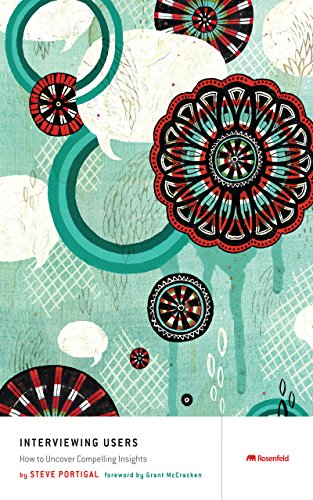
Interviewing Users: How to Uncover Compelling Insights by Steve Portigal
I bought this book to help improve my beta testing hosting skills. I’ve been able to get good feedback from people in the testing sessions, and I’ve done some reading on how to interview users but I wanted to expand that knowledge.
Here’s a few things I learned from this book that I can apply now or soon to my testing. I’ve mixed in some related ideas of my own.
There’s a lot more in the book that doesn’t apply to me right now. (So, future me, be sure to pick this book up again when circumstances change with testing).
Book Highlights
- Identifying Testers
- You’ll have more success with people who already know each other.
- Make a screener to determine the best testers. This can be just for your use if you already know the testers, otherwise you’ll have to send some screening questions to them.
- Set expectations before you ask them to do the screener or any other work, especially if they are not going to be paid for their time. (“It will be a 60 minute sessions. There will be four people. There’s singing.” etc).
- Let them know you will be using a “participant agreement” or “beta evaluation agreement” to make sure ideas that come out of the session belong to the ER. Do not do defensive nattering when giving it to them (such as “ha ha, you’re not signing your life away”), just give it to them and ask them to sign it. Preferrably get them to sign it before they show up.
- Keep it to 90 minutes, max.
- Prepare for their arrival
- If they are unpaid volunteers, consider incentives. Small gift cards. Cash. Include a personal thank you.
- Set it up so that you will sit 45 degree to them. Not behind them.
- Create an environment that feels more conversational than interrogatory.
- Recording the session: he recommends audio, video, and photos. All of them for various uses later.
- Welcome them and set expectations
- Participants don’t know what supposed to happen, so gently take charge and set expectations. “Before we get started…” helps set any logistics.
- Get the awkwardness down. Acknowledge this format is unusual.
- Advocate for the tester, not your product. We are there to create something awesome for THEM.
- Eye contact between you and your testers is very important.
- During the interview
- Be objective.
- Reflect back their comments.
- Don’t mention or preface things with ideas and opinions that will influence their feedback. Such as “This one is a little shaky” or “I’m not a fan of this”. Present your concepts neutrally.
- Don’t tell them what you know or what you’ve learned. Don’t share your journey.
- Let them be the experts. You be the novice trying to understand.
- People don’t know what you want to know sometimes. You might have to ask multiple similar questions to get what you want.
- Don’t talk too much.
- Allow silence. They might be done talking or they might be thinking. Give it some time to see which is the case. Count to yourself to keep from talking. Recite “I am being quiet” over and over again. Repeat “allow silence”. Whatever it takes. Just don’t talk.
- In reference to a Werner Herzog interview he observes “He lets a delicate moment hang uncomfortably, and a devastating emotion emerges. That’s the power of silence”.
- If they give a short answer, consider there might be more. Stay shut up and let them talk more.
- To get them to talk more about something they just said, repeat the last 3 words they said as a question.
- Ask the shortest question you can. Then be silent.
- Force yourself to count to 5 before everything you say.
- Get them to the tipping point.
- Your objective is to get to the “tipping point” where it goes from question-and-answer, question-and-answer to question-and-STORY. You want them to start telling stories and letting loose more. Get them from short answers to telling stories.
- There is a point where you can feel the shift and they are now on board fully and talking about ideas they have and really getting into it. This is where you want to get.
- When they are leaving
- Hand them the incentives (if you have them) and thank you card.
- Afterward
- You must absolutely allow time for top-of-mind debriefing directly after the interview. In my case I am doing a brain dump for myself after they leave. Make a quick sheet of initial thoughts on each user and their experience. The deeper analysis can come later. This is just initial thoughts. You can create a “topline report” from it.
- Make sure you note in the Thank You spreadsheet all testers first and last names.
- Misc Ideas depending on what you are trying to learn.
- Show them some photos that might invoke the brand. Ask them to choose the ones that say it best. Then – most importantly – ask them WHY they chose those.
A Few More Notes
The font is insanely small. The book is about 150 pages and is graphic- and case-study heavy. The book was a pricey $43 on Amazon (even the kindle version is $28). While I wouldn’t say it’s the best ROI, there’s valuable information and not much fluff, so I’d recommend this book.
This book is very narrowly focused on interviewing users. It doesn’t talk much about product design or related aspects of product development. Consider that before purchasing this book.